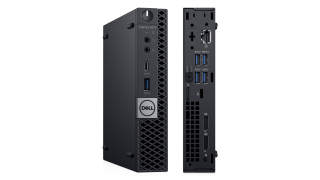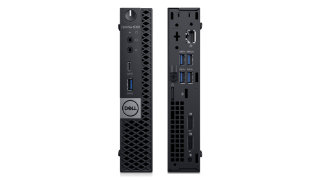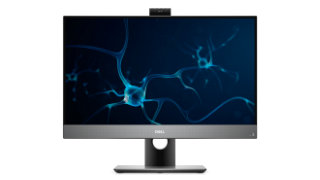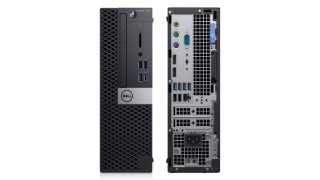Dell Optiplex 3070 Micro vs. Dell Optiplex 5070 Micro
Here is a side by side comparison between Dell Optiplex 3070 Micro and Dell Optiplex 5070 Micro specs including price, processors, memory, graphics, storage, ports, and more.
Specs Comparison
Compare With Please enter device name or part of it | Compare With Please enter device name or part of it | |
Key Features | ||
| What's new |
|
|
Availability | Dell Optiplex 3070 Micro | Dell Optiplex 5070 Micro |
| Released | 2019 | 2019 |
| Release Info | Announced on June 01, 2019. | Announced on June 01, 2019. |
| Generations |
|
|
Exterior | Dell Optiplex 3070 Micro | Dell Optiplex 5070 Micro |
| Size Comparison | ||
| Dimensions | 7.0” x 7.2” x 1.4” (178 x 183 x 36 mm) | 7.0” x 7.2” x 1.4” (178 x 182 x 36 mm) |
| Weight | Starting at 2.60 lb (1.18 kg) | Starting at 2.6 lbs. (1.18 kg) |
| Colors | Black | Black |
| Keyboard and Trackpad |
| Dell Wired Mouse and Keyboard |
| Ports | Front
| Front
|
Chasis | Dell Optiplex 3070 Micro | Dell Optiplex 5070 Micro |
| Form Factor | Micro Form Factor (1.16L) | Micro Form Factor (1.17L) |
| Power Supply | 65W 4.5mm Barrel Power Adapter. | 90W 4.5mm Barrel Power Adapter. |
Internal Specs | Dell Optiplex 3070 Micro | Dell Optiplex 5070 Micro |
| Chipset | Intel® H370 Chipset | Intel® Q370 Chipset |
| Processor |
|
|
| Integrated Graphics |
|
|
| Memory |
4GB 8GB 16GB 32GB | 4GB 8GB 16GB 32GB
|
| Storage |
|
|
| Slots | Expansion Slots
| Expansion Slots
|
Connectivity | Dell Optiplex 3070 Micro | Dell Optiplex 5070 Micro |
| Wi-Fi |
|
|
| Bluetooth | Bluetooth 4.1 Bluetooth 4.2 Bluetooth 5 Optional | Bluetooth 4.1 Bluetooth 4.2 Bluetooth 5 Optional |
| Ethernet | Intel Realtek RTL8111HSD-CG Gigabit Ethernet controller Speed: 10/100/1000 Mbps. | Intel i219-V Gigabit1 Ethernet controller Speed: 10/100/1000 Mbps, Supports Wake Up, PXE support. |
Software | Dell Optiplex 3070 Micro | Dell Optiplex 5070 Micro |
| OS |
|
|
| Built-in Apps | Microsoft Office 30 Day Trial | Microsoft Office 30 Day Trial |
Camera & Audio | Dell Optiplex 3070 Micro | Dell Optiplex 5070 Micro |
| Audio |
|
|
Misc | Dell Optiplex 3070 Micro | Dell Optiplex 5070 Micro |
| Warranty | Limited Hardware Warranty | Limited Hardware Warranty |
Dell Optiplex 3070 Micro vs. Dell Optiplex 5070 Micro
The Dell Optiplex 3070 Micro and the Dell Optiplex 5070 Micro were released in the same year, 2019. The Dell Optiplex 3070 Micro has a small form factor that commonly can only fit a Mini ITX motherboard, one or two hard disk drives, and supports only a small form factor or half-height graphics card. The Dell Optiplex 5070 Micro has a micro form factor that can only fit a custom-designed motherboard with none or one expansion slot and supports only a specific OEM graphics card.
Processor
The Central Processing Unit (CPU) is like the brains of your desktop computer. Its performance determines how fast and responsive your PC is. Generally, a processor with newer architecture, more CPU cores, higher TDP (measured in W), and faster clock speed (measured in GHz) tends to be more expensive and run faster than others with older architecture, fewer CPU cores, lower TDP, and lower clock speed.
For Dell Optiplex 3070 Micro, you have options to configure it with a 35W Intel Coffee Lake dual-core Intel Celeron G4930T up to a 35W 8-core Intel Core i7-9700T with a boost speed up to 4.30 GHz.While Dell Optiplex 5070 Micro has configurations with a 35W Intel Coffee Lake dual-core Intel Pentium Gold G5420T up to a 35W 8-core Intel Core i7-9700T with a boost speed up to 4.30 GHz.
Memory
The Random Access Memory or RAM is the super-fast and temporary storage used to handle all active tasks, apps, and games that will go away when your PC turns off. The more memory your PC has, the better multitasking your PC can handle without having to reload data from slower permanent storage that includes the hard disk drive or solid-state drive.
Both PCs have the same amount of two RAM slots meaning that you upgrade later if you are unsatisfied with the amount of memory on your PC. You can upgrade memory on both systems up to 32GB of 2666MHz dual-channel DDR4 memory.
Ports
Computer ports are the interface for connecting your PC to its peripheral devices or other PCs. The most common peripherals are keyboard, mouse, monitor, flash drive, speaker, and printer. Most of them use Universal Serial Bus (USB) as their connection to your computer. So the PC with more USB ports can connect to more peripherals at the same time.
There is a total number of 6 USB ports available on both PCs. On top of the number of USB ports, the type and version of each USB port are also necessary for determining how fast it is.
The Dell Optiplex 3070 Micro has six USB ports USB ports that all of them are Type-A port. It has two ports that support USB 2.0 (480 Mbps) and four ports that support USB 3.2 Gen 1 (5 Gbps).
For Dell Optiplex 5070 Micro, it has five USB Type-A ports and one USB Type-C port. The PC has five ports that support USB 3.2 Gen 1 (5 Gbps) and one port that supports USB 3.2 Gen 2 (10 Gbps).
Pricing
Motherboard
Dell Optiplex 3070 Micro System Board.
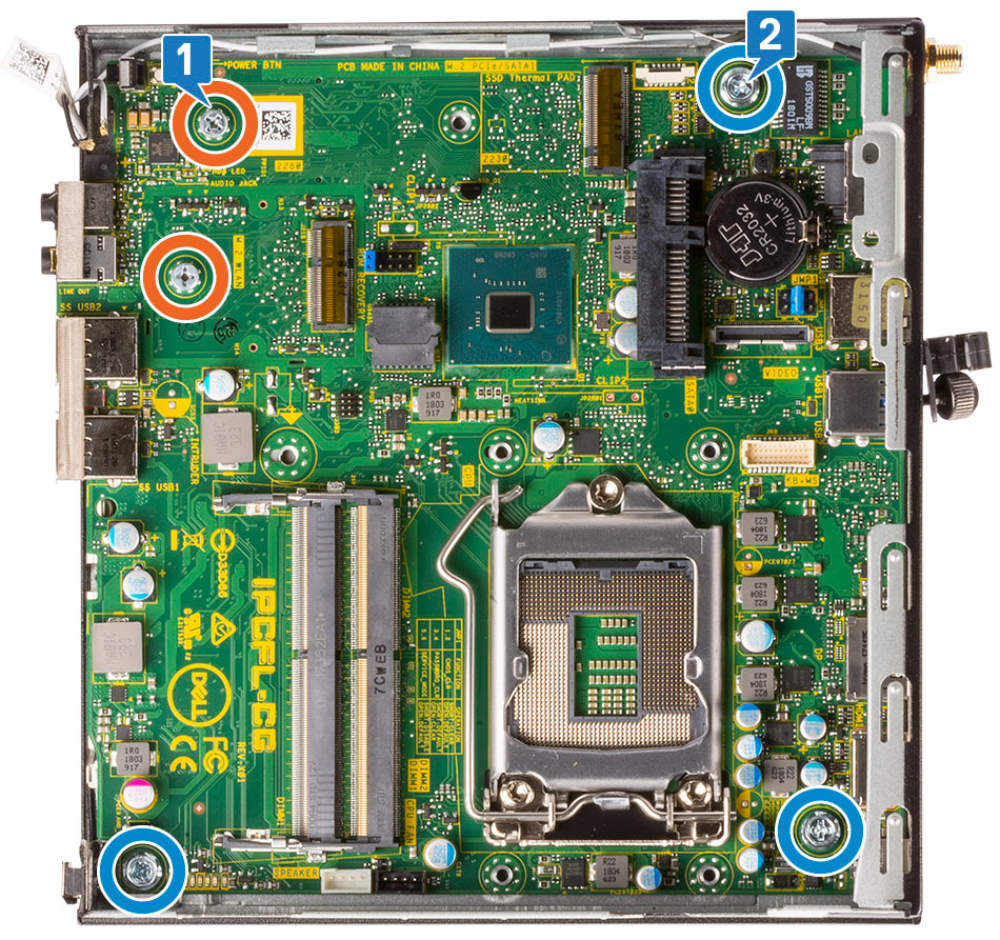
Dell Optiplex 5070 Micro System Board.

Popular Comparisons for Dell Optiplex 3070 Micro
Here are the most frequently requested comparisons for Dell Optiplex 3070 Micro:
Popular Comparisons for Dell Optiplex 5070 Micro
Here are the most frequently requested comparisons for Dell Optiplex 5070 Micro:
Dell Optiplex 3070 Micro FAQs
Here are some related questions you might want to know about the Dell Optiplex 3070 Micro:
- What Processor Does the Dell Optiplex 3070 Micro Have?
- Can You Install Graphics Card in Dell Optiplex 3070 Micro?
- What Ports Are on Dell Optiplex 3070 Micro?
- What is the Weight and Size of Dell Optiplex 3070 Micro?
- Can You Add More RAM to Dell Optiplex 3070 Micro?
Dell Optiplex 5070 Micro FAQs
Here are some related questions you might want to know about the Dell Optiplex 5070 Micro:
- What Processor Does the Dell Optiplex 5070 Micro Have?
- Can You Install Graphics Card in Dell Optiplex 5070 Micro?
- What Ports Are on Dell Optiplex 5070 Micro?
- What is the Weight and Size of Dell Optiplex 5070 Micro?
- Can You Add More RAM to Dell Optiplex 5070 Micro?
Dell Optiplex Family
Here are all Dell Optiplex devices we’ve covered on our site:
Click here to view all Dell Optiplex desktops.














